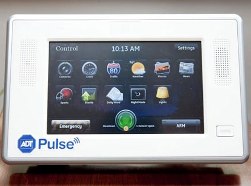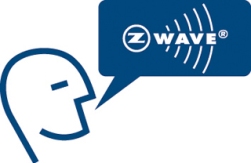Categories: Featured Articles » Home automation
Number of views: 11,745
Comments on the article: 0
Z-Wave standard: zero-pressure home automation
 It is interesting to trace the origin of the names of market products. For example, the X10 standard owes its name to the mean Scots, who so economically designated their successful, famous version of the protocol home automation.
It is interesting to trace the origin of the names of market products. For example, the X10 standard owes its name to the mean Scots, who so economically designated their successful, famous version of the protocol home automation.
What inspired the Danes to name their Z-Wave standardis definitely unknown. Either the proximity of the seas, or perhaps the feature of wireless load control, influenced the name of the standard. One way or another, but today he has received strong support in the face of an international consortium of leading world manufacturers and is becoming very popular.
The standard is based on the ideology of building a network (mesh - network) of devices interconnected via a radio channel. But before moving on to a specific consideration of devices running Z-Wave protocollet's figure it out Do I need automation at home, and if so, which one? Any automation at home is, first of all, costs, both material and time for installation of systems. And then you still need to maintain and repair them.
If we exclude the trivial desire to surprise guests, then the main reason may be the saving of energy resources consumed in everyday life. The second (and most likely, even the first) is an indication of emergency situations in the apartment in the absence of owners. Given the condition of our housing stock and the communications in them, the problem of water leakage can turn into a tragedy.
There are still dangers of the forgotten included iron, gas pots and a trivial short circuit in the electrical network. The problem of a “homeless” house is especially acute during the summer holidays, when you have to strain friends to look after an empty house.
If you install automation, then it will give an alarm in time, and will save you from huge losses, not comparable to the cost of control modules and efforts to configure them. The timer light will convince uninvited guests that the owner of the house will be dissatisfied with visitors.
If the above examples convince you to contact smart home devices, then move on to consider the capabilities of products of the standard Z-Wave. With their help, all this can be turned into reality.
For today Z-Wave Sensor Group covers the entire range of applications that may arise when developing control scenarios. These are water leakage sensors, Eversrping smoke detectors, door / window opening sensors. There are sensors for presence, temperature, humidity, and even a Sensoair carbon dioxide sensor, costing over $ 530. But do not be scared: the cost of the main list of touch devices lies in the range from 45 to 120 dollars.
Further reaction to the sensor signal depends on the scenario you have chosen. This can be the inclusion of a siren or the transmission of a message through an Internet gateway. If necessary, you can send an alarm to the console of firefighters or the police. In the event of a threat of flooding of neighbors, the sensor signal can block solenoid valve water supply.
All these features, and many others that are not related to emergency situations, are implemented in systems built on the basis of the Z-Wave standard.
 Z-Wave Product Network contains two types of nodes: controllers that can set the route of the transmitted signal, and actuators with the function of relaying the signal.
Z-Wave Product Network contains two types of nodes: controllers that can set the route of the transmitted signal, and actuators with the function of relaying the signal.
In turn, the controllers are divided into mobile, implemented as portable control panels, and stationary. Stationary controllers have an expanded set of functions: routing, conflict resolution in the network, interaction with other types of networks.
The last opportunity is a little more detailed.Pursuing an aggressive policy of introducing the standard into home automation, a consortium of manufacturers took into account that many users already have systems or fragments of other types. Therefore, a set of extenders, or bridges, is proposed for interaction with IR devices, networks based on the RS-485 interface, or old standard X10.
Such “omnivorousness” of the new standard is the key to its easy adaptation not only to home networks, but also as a management subsystem in office and small retail premises.
In addition to the controllers, the rest of the system nodes are child devices of different levels of complexity and purpose. They usually work in three modes: receiving a signal with a consumption of up to 23 mA current, transmitting with a consumption of 36 mA, and "sleep" mode, in which consumption is reduced to 2.5 μA.
The latter circumstance is very important for devices that have autonomous power. This circumstance imposes stringent requirements on the consumption of AAA batteries. The devices themselves operate in an economical mode: short commands (up to 46 bytes in size) are received, transmitted and processed using frequency modulation of the signal.
Z-Wave Devices Originally not intended for processing and transmitting streaming data. Their destiny is working with short teams. But in this case, it all depends on the data movement route.
There is a simple set of rules for extending the life of batteries. One of them says that the receiver must be available for the command package. If this rule is met, then the energy consumption is reduced by about 70 times compared with the case when the receiving device did not immediately respond, and the controller has to change the data transfer route and duplicate commands.
Since the battery life in the devices is consumed differently, the controllers have a test function. He checks the status of power supplies at all nodes available to him.
An example of such a product is the router DUM_064473. But he can’t change the batteries every 2-3 months in the devices. Therefore, it is better to entrust the development of a smart home project to firms or specialists specializing in optimizing Z-Wave standard systems.
Another remark for those who value the design of their premises and do not want to change their hard-to-get exclusive wiring accessories for blocks of the Z-Wave series.
Ad hoc Fibaro company mastered the production of control micromodules, which are installed in the mounting box on the back of the switches and sockets, turning them into intelligent devices. See here for more details:Fibaro Starter Kit for creating a smart home
Summing up, we can say that the new standard of home automation has all the necessary hardware and software resources to solve any arbitrarily complex task of monitoring and controlling home devices.
The ability to interact with bridge devices with streaming devices, for example, video cameras, makes it a universal control tool and security systems. And given the composition of firms that support this standard, in the future we should expect its complete dominance in the home automation market.
See also at e.imadeself.com
:
